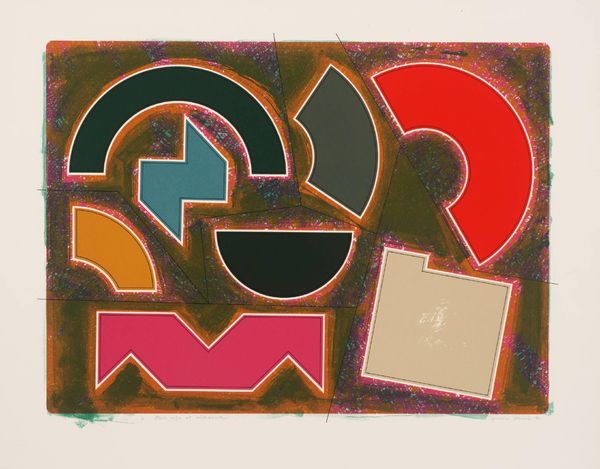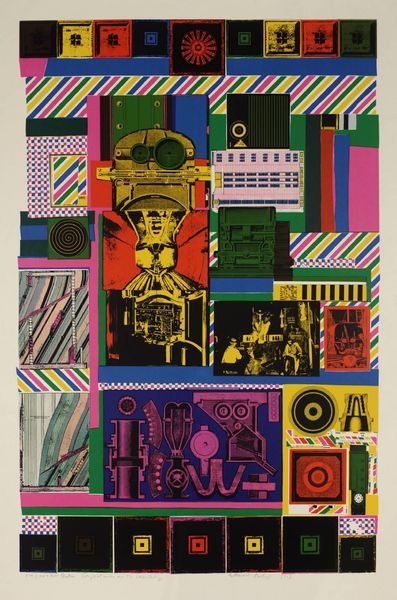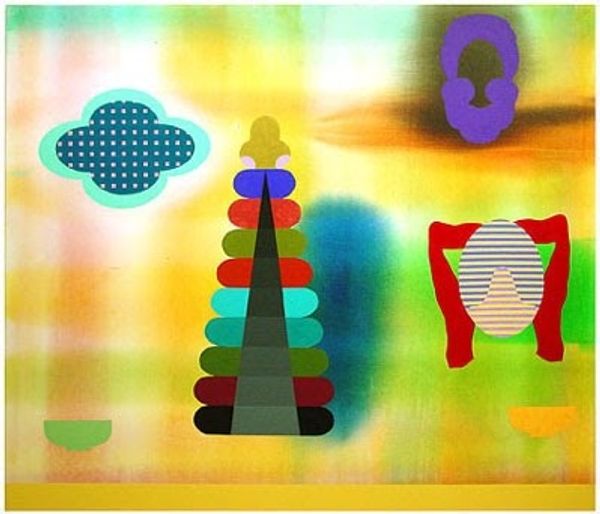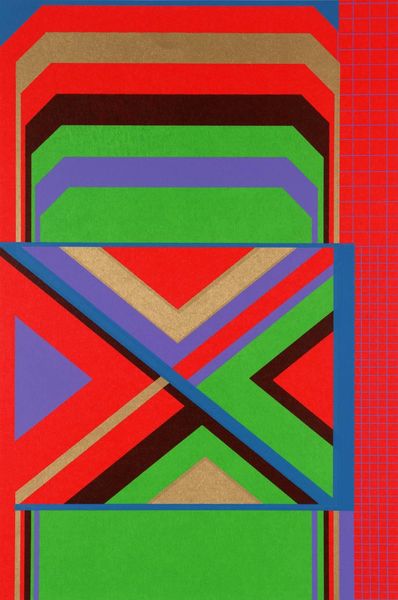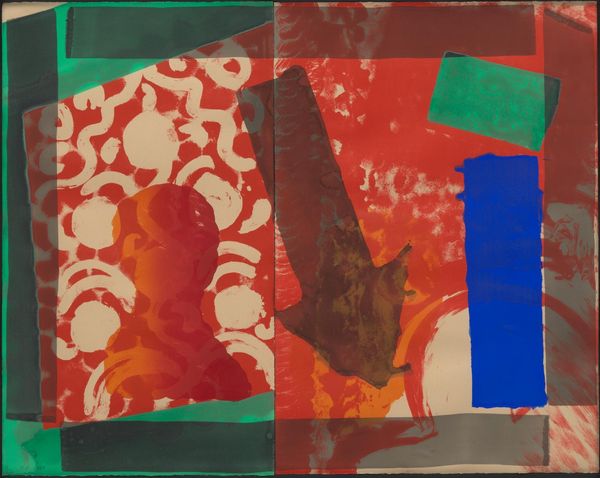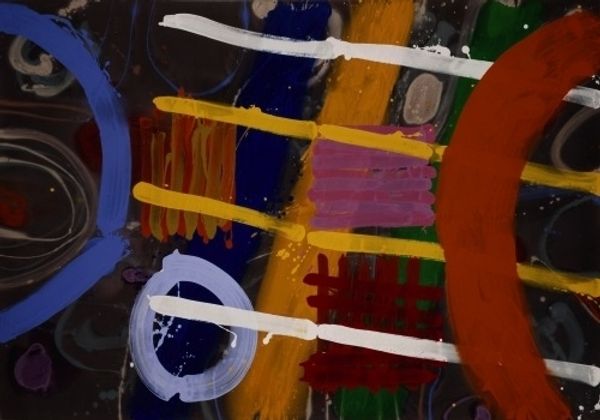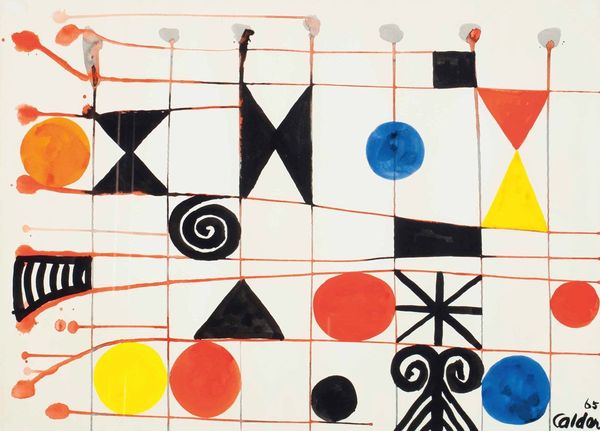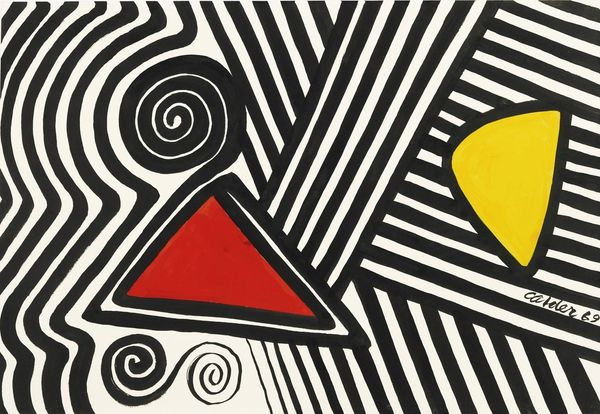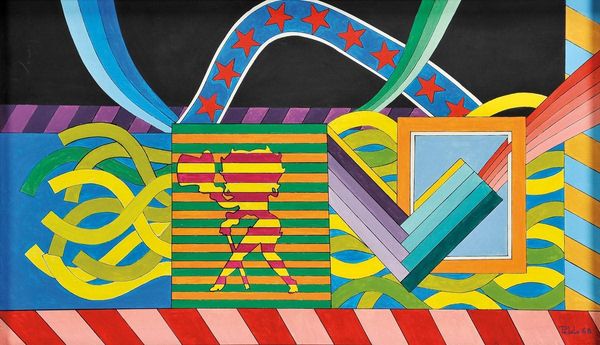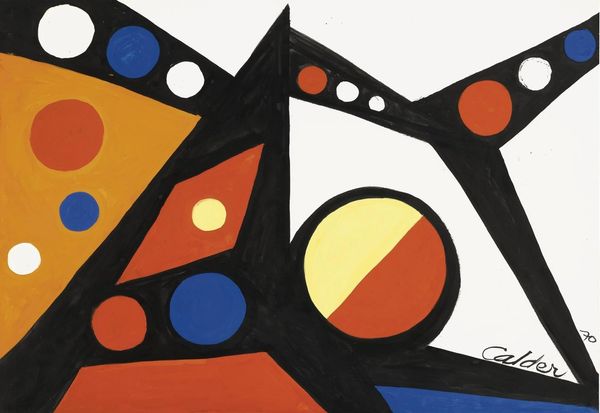
mixed-media, collage
#
cubism
#
mixed-media
#
collage
#
appropriation
#
pop art
#
geometric-abstraction
#
pop-art
Copyright: Peter Phillips,Fair Use
Curator: Let’s turn our attention to this striking “Untitled” mixed-media collage from 1965 by Peter Phillips. It’s a vibrant and engaging example of Pop Art. Editor: My initial impression is one of playful chaos! The layering of images, the bold colors against that stark silver backdrop... it’s definitely eye-catching. Curator: Absolutely. Phillips's work, particularly during the mid-1960s, was heavily influenced by his interest in technology and the emerging consumer culture. He uses a collage technique and bold design elements to examine the politics of imagery. He appropriates recognizable forms, such as those automotive engine parts, transforming them into graphic icons. Editor: So, this use of recognizable yet decontextualized imagery acts as a commentary? Does this extraction mirror how advertising at the time stripped objects of their use value and repurposed them to sell other goods? Curator: Precisely! Consider how mass media operates—fragmenting and reorganizing cultural symbols. It invites questions about the very notion of authorship. Where does the original end and the appropriated begin? There is a fascinating critique of commodification here. Editor: That makes me think about gender roles, too. Were cars more than just objects, representing ideas about masculine identity? I wonder if Phillip’s combination of those mazes and geometric patterns reflects cultural norms and constraints. Curator: The integration of traditionally ‘masculine’ symbols such as automobiles with those 'feminine' forms generates a unique conversation. In particular, one could explore how consumerism perpetuates these roles, thus understanding Phillip’s pieces as deconstructing existing narratives on gender. Editor: So, in its chaotic way, the work encourages a new understanding of culture as itself a kind of mixed-media collage? Curator: Precisely, these works ask us to investigate not just individual meaning-making, but also the collective creation of meaning in our visual environment. It demands attention and critical evaluation. Editor: Thinking about art as a kind of social history book can truly alter my approach to it, broadening not only my aesthetic view, but my ethical one too. Curator: And I would add that using theories of gender and identity alongside an understanding of history invites dialogue about complex power structures within cultural images.
Comments
No comments
Be the first to comment and join the conversation on the ultimate creative platform.
